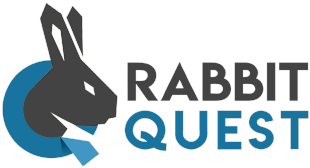The power of personalization: How a health app can help you fine-tune vitality programs
Ever felt like you're spinning a roulette wheel when picking wellness programs, hoping it lands on something that actually vibes with your team? You're not alone! In a world of kale-smoothie aficionados and 'I'll take the elevator, thanks' enthusiasts, creating a one-size-fits-all wellness program is about as feasible as finding a unicorn at the water cooler. 🦄 The secret sauce to winning hearts (and health stats)? Personalization! So, buckle up, because we're diving into the world of apps.
Time to read: 5 minutes
1. Customizable goal setting: Personalized objectives for personal journeys
When it comes to health and wellness, one size does not fit all. Health apps often come with built-in goal-setting features, allowing employees to set their own wellness objectives based on their unique needs and preferences. Imagine Sarah wants to run a half-marathon in six months, while Mark aims to reduce his stress through mindfulness exercises.
With customizable goal setting, each individual can tailor their wellness program to align with what they truly care about. This targeted approach not only encourages employee buy-in but also instills a sense of ownership. By letting your employees guide their wellness journey, you are empowering them to be the change-makers, which ultimately enhances the program's success rate and reach.
2. Targeted recommendations: A personal coach in the palm of your hand
Health apps are quite sophisticated; they're not just about counting steps or calories. By collecting and analyzing user data, such as daily activity levels, health apps can provide laser-focused recommendations to each employee.
These personalized suggestions aren't general advice but are tailored to each individual's health metrics and lifestyle. This level of specificity simplifies the process for employees, making it easier for them to adopt and maintain healthier habits. It also vastly improves the likelihood of long-term behavior change, making your wellness program more effective and impactful.
3. Progress tracking and feedback: Celebrate the small wins to achieve big goals
Real-time tracking and feedback are at the core of many health apps, enabling individuals to stay on top of their progress and make adjustments when needed. But it’s not just about numbers; it's also about understanding what these numbers mean for each individual's wellness journey. Whether it's watching the miles add up for a walking challenge or seeing stress levels decrease through mindfulness practices, these metrics serve as motivating milestones.
For a HR manager, this individual-level data is a goldmine. By aggregating this information, you can identify trends and patterns in employee wellness, making it possible to refine the program accordingly. For instance, if you notice a collective uptick in stress levels during a particular quarter, you could implement stress management workshops to tackle this issue head-on.
4. Social support and accountability: Building a community of wellness champions
The journey to wellness often becomes more manageable and enjoyable when shared. Many health apps include social features, such as community boards, friend lists, and even challenge functionalities, allowing employees to engage with their colleagues in a new, meaningful way. You can share recipes, celebrate each other's achievements, or even collaborate on wellness goals. This not only establishes a sense of camaraderie but also fosters accountability. Knowing that your colleague Sarah will be inspired by your progress at the end of the week can be just the motivational push needed to take that extra step or eat that healthier meal. In essence, social features turn individual aspirations into team objectives, creating an overarching culture of health and wellbeing within your organization.
5. Gamification and incentives: Making vitality fun and rewarding
People love games and rewards. The integration of gamification elements like badges, leaderboards, and custom challenges can make the journey to better health surprisingly fun. Employees can compete in step challenges, earn badges for completing a series of yoga classes, or unlock rewards for maintaining a balanced diet. These elements, tailored to individual and team preferences, not only make wellness programs more engaging but also provide an extra layer of motivation. And let's not forget the HR benefit here; gamification can offer valuable insights into employee participation rates, helping you tweak or add components that resonate most with your employees.
6. Flexibility and accessibility: Wellness that fits into your pocket
We live in an increasingly mobile world, and wellness initiatives should reflect this. Health apps give your employees the freedom to access wellness resources whenever and wherever they choose, be it during a lunch break, on a business trip, or in the comfort of their home. This kind of anytime, anywhere access is particularly beneficial for teams that work remotely or have diverse schedules. HR managers can also utilize this flexibility to send notifications, reminders, or vitality tips directly to employees' mobile devices, ensuring that health remains a priority, no matter how hectic our lives may get.
By leveraging the power of personalization, health apps can help HR managers fine-tune workplace wellness programs for maximum impact. By offering customizable goal setting, targeted recommendations, and integrated support, health apps empower employees to take charge of their well-being and enable organizations to foster a culture of health and vitality.




